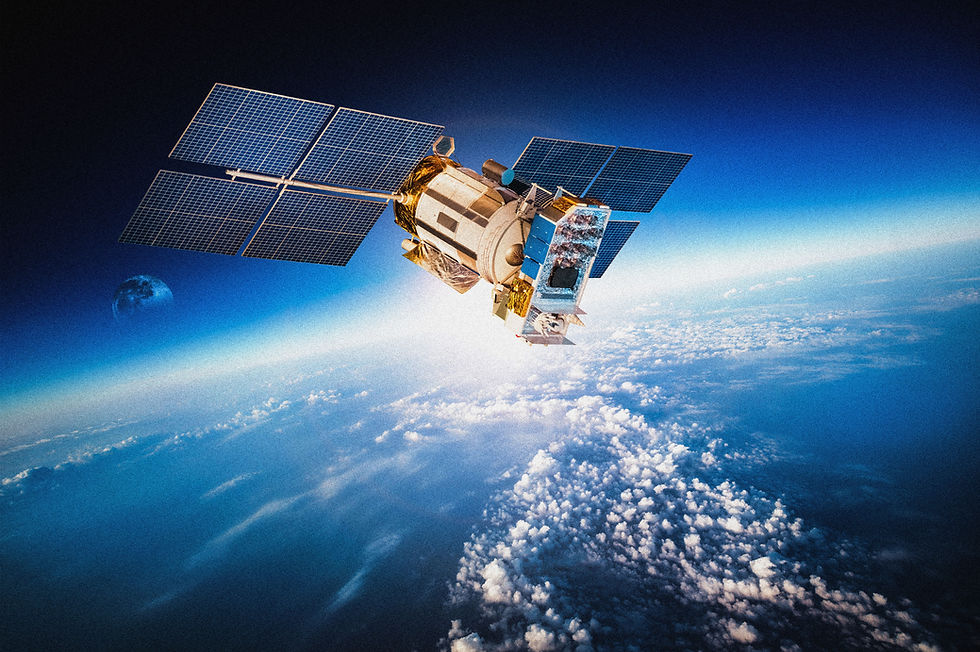Tech Talks: Saving Lives and Resources Through Innovation
- subudhirishika
- Nov 13, 2024
- 4 min read

In our fast-paced world, technology is more than just a tool; it is a game changer. Its impact is evident in how we communicate, work, and even respond to emergencies. One of the most crucial areas where technology is making a difference is in disaster management. From earthquakes to floods, tech-driven strategies are redefining how we prepare for, react to, and recover from disasters. This blog explores the significant role of technology in disaster management, featuring innovations like real-time data analysis, drone rescue operations, and predictive modeling.
Real-Time Data Analysis: The Heart of Modern Disaster Response
In the field of disaster management, real-time data analysis acts as the lifeblood that keeps operations running smoothly. Advanced sensors and satellite technology allow authorities to gather critical information swiftly. For instance, during Hurricane Harvey in 2017, meteorologists used cutting-edge satellite imagery to track storm progression, wind speeds, and rainfall. This timely analysis led to early warnings that saved countless lives in Texas and Louisiana.
Social media also plays an essential role in data collection during crises. Organizations leverage algorithms to analyze online posts and gain situational awareness. For example, during the 2020 Australian bushfires, emergency services monitored social media activity to gauge how communities were coping and to identify areas needing support. Such crowdsourced data fills in gaps traditional methods may overlook, enabling rapid action that can save lives.

Drone Rescue Operations: Eyes in the Sky
When disaster strikes, every second counts, especially in search and rescue. Drones—unmanned aerial vehicles—have emerged as invaluable tools in these scenarios. Equipped with thermal imaging cameras, drones can locate survivors trapped in debris or isolated by natural barriers. For example, during the 2015 Nepal earthquake, drones were successfully used to identify areas requiring urgent aid, providing vital data to rescue teams working in the field.
Moreover, drones can assess damage post-disaster. Aerial footage allows emergency services to identify high-priority areas needing immediate assistance. According to a study by the American Red Cross, using drones for this purpose speeds up recovery efforts by up to 30%, allowing for quicker resource allocation.
Predictive Modeling: Anticipating the Unpredictable
In disaster management, the saying "knowledge is power" rings especially true, and predictive modeling offers that power. By examining historical data and trends, emergency planners can create models that anticipate potential disasters. For instance, researchers have developed predictive models for hurricanes that factor in water temperatures and atmospheric conditions to improve forecasting accuracy by approximately 20%.
Machine learning enhances these models further. Algorithms trained on vast datasets provide refined predictions regarding extreme weather events. This technology was instrumental during the 2021 Texas winter storm, allowing local authorities to implement proactive measures, such as instituting rolling blackouts, which minimized the impact on the power grid and ultimately saved lives.
Mobile Apps: Empowering Individuals
The smartphone revolution has equipped individuals with tools for real-time information during disasters. Many governments and organizations have developed applications to alert users about imminent dangers and offer safety guidance.
For example, the FEMA app allows users to receive push notifications about weather alerts, evacuation routes, and local disaster resources. In addition, the app includes interactive maps that show accessible shelters and emergency services. During Hurricane Irma in 2017, the app was crucial in helping residents in Florida stay informed and make timely decisions during the evacuation.
Apps that provide real-time updates offer a lifeline during emergencies. Residents can assess their situations quickly and make informed choices, which can significantly impact their safety and survival.
Collaborative Platforms: Uniting Efforts
Collaboration is the backbone of effective disaster management, and technology facilitates this vital cooperation. Online platforms enable various stakeholders—from emergency services to non-profits—to share information seamlessly.
Tools like Slack and Microsoft Teams help teams coordinate their efforts in real-time. For example, in the aftermath of the 2011 Japan earthquake, a collaborative online platform allowed NGOs, government agencies, and volunteers to communicate effectively, ensuring resource allocation was optimized and that victims received timely assistance.
When organizations can share data and needs efficiently, responses to disasters become more streamlined. This not only aids in effective resource use but also ensures that victims receive help without unnecessary delays.
The Road Ahead: Challenges and Innovations
While the advancements in technology have significantly improved disaster management, challenges remain. Ensuring equitable access to these innovations is essential. Underserved communities, which often lack resources, may struggle to utilize technology fully.
Furthermore, as technology continues to grow, so does the need for training. Agencies must provide personnel with proper education and hands-on experience with new tools to maximize their effectiveness.
Despite these hurdles, a bright future lies ahead. Emerging technologies, including artificial intelligence and blockchain, promise to enhance disaster management strategies further, revolutionizing the industry in the coming years.
The Future of Disaster Management
Technology serves as a powerful ally in the fight against disasters. Through innovations like real-time data analysis, drone operations, predictive modeling, mobile apps, and collaborative platforms, we have seen a transformation that not only saves lives but also makes better use of resources.
As we continue innovating in this field, the ultimate goal remains clear: leverage technology to pave the way for a safer, more resilient world. By embracing these advancements, we equip ourselves to face natural disasters more effectively, ensuring that lives and communities can recover faster and stronger.




Comments